Last Updated on January 25, 2024 by Greg Gillson
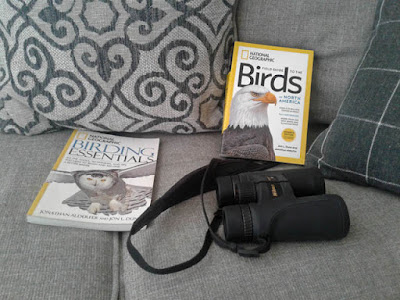 |
| Binoculars, field guide, birding technique book |
The photo above shows what I consider to be the best minimum bird watching equipment for those who want to find and observe birds beyond the backyard. Those are my binoculars and books on my couch. I have shelves of other bird books, a spotting scope, a DLSR camera with super-telephoto lens. There are so many confusing tools and options. These 3 simple items are where I’d recommend anyone start bird watching. A birding kit. Yet they are sufficient for all experience levels–you’ll never outgrow them!
My recommended bird watching kit for adults includes these items:
- Binoculars: Celestron Trailseeker, 8×42
- Field Guide: National Geographic Field Guide to the Birds of North America, 7th Edition
- Bird Watching Handbook: National Geographic Birding Essentials
I’ll discuss why I recommend these next, and then later down the page give you some additional options.
Field Birding Binoculars
Celestron Trailseeker ED 8×42
Confession time. Originally, I had the Nikon Monarch 5 listed here. It is a very popular and best selling binocular for birders. But the Celestron Trailseeker has significantly better specs for a similar price, with msrp of $250-300.
The 8x magnification and 42mm objective lens size is the most popular configuration for birders, giving a nice bright display, even at dawn, under a gloomy marine layer, or inside a dark woods. The eye relief if 17.2mm is good for eyeglass wearers. The Nikon is 3 ounces lighter, but the Celestron is still one of the lightest weight binoculars.
Where the Celestron starts separating itself from the Nikon is in the close focus and the field of view. The Celestron has a close focus distance of 6.5 feet. You will be able to view butterflies on the trail at your feet, birds in close bushes or in window feeders. The Nikon isn’t bad, at 7.8 feet, but the Celestron is better.
The field of view. This is what convinces me. The field of view of the Nikon Monarch 5 is 330 feet at 1000 yards. That’s not very good. This means that if you are looking across a field at a fence line a thousand yards distant, you could see 330 feet of fence line in your binoculars, side-to-side. Sounds good. However, with the Celestron Trailseeker ED you would be able to see 426 feet of fence line–an extra 96 feet! Now that’s a wide field of view!
This binocular is waterproof and fog proof. It has the best extra low dispersion (ED) glass that gives the clearest, sharpest view.
Full disclosure: I actually splurged for the Nikon Monarch 7, 8×42 a while ago. It’s at the upper end of that price range for mid-priced binoculars. The deciding factor for me was that the Monarch 7 has an even wider field of view (419 feet at 1000 yards) than the Monarch 5 (330 feet) that makes finding the bird easier. The eye relief is slightly shorter (17.1mm) but still adequate for me using eyeglasses. The weight is 22.9 oz, only a slight increase. It has more expensive optical coatings for superior low-light performance.
Read my in-depth review of the Nikon Monarch 7 8×42 binocular
Read my in-depth review of the Celestron Nature DX ED 8×42 binocular. It is the best low-priced binocular.
Field Guide
National Geographic Field Guide to the Birds of North America, 7th Edition — September 2017
I have a dozen various field guides to North American birds. There are two that stand out: Sibley’s and the National Geographic. Both are excellent. But I recommend the National Geographic guide for a couple of reasons.
Bird nomenclature and speciation have been wildly in flux the past decade or so. Bird names are changing. New birds are being recognized and split apart. New birds are being added to the North American list being found for the first time in Alaska, along the southern border states and at sea. Every. Year. The National Geographic field guide has had 4 editions since 1999, Sibley only 2.
Why not Sibley? The Sibley Guide to Birds came out with a Second Edition in 2014. The content is excellent, but the publisher messed up the printing with fonts that were too small and lacked contrast. In addition, the bird plates were too dark and over-saturated. A second printing of the Second Edition improved this. But you have to read the title page to determine what printing you have. You can not be sure what you’ll get when you order online. I still have and use my first printing of the Second Edition that I bought, but I don’t recommend it as your only or first field guide. And I don’t recommend you order your book online.
Why not an Eastern or Western version of the National Geographic guide? The continental guide (7th Edition) lists 1023 species “all the species,” The Eastern version 619 species, the Western version 750 species. That’s really not that many different. The main problem, though, is that the Eastern and Western versions are derived from earlier editions of the main book. They were printed in 2008. They’re out of date by a couple of editions.
Why not a “beginner” guide? It is so frustrating to have a bird in front of you yet not be able to identify it from your field guide. Most beginner “state” guides have less than 150 species. Yet most states have 300-400 regular species, plus another 100 rarities. Such beginner guides often show only the breeding plumage male. They may not show the females, or non-breeding males, or some long-held immature plumages, or regional variations. They usually only show the birds in one posture, either perched or flying, but not both.
There’s much that can be written about the trade-offs with field guides. But this is one of the top two, and easily ordered online.
Bird watching tips and techniques
National Geographic Birding Essentials (2007)
I wish I would have had this handbook when I first started birding! But I still recommend it for all birders to have in their bookshelf–it is just so informative!
It starts explaining the what and how of binoculars and field guides. It goes on to discuss status and distribution of birds and understanding range maps and bar charts.
The next section points out parts of a bird using many different bird families and orders as examples. Then it tackles identification using size and structure before even looking at plumage. Then it spends some pages on behavior and song. It has a whole chapter on variation in birds: sexual, seasonal, age-related, geographical and others.
A chapter discusses identification challenges, showing several examples of easy, moderate and difficult ID challenges, including “the hardest dozen.”
Chapter 8 is Fieldcraft, a favorite topic of mine. Find and identify more birds, that’s what fieldcraft is all about. How to watch birds without scaring them away. Where and when to bird. Listing, journaling and note taking, photography and citizen science projects are covered. Migration. Apps. Additional birding equipment. A good overview, but there is enough material here for a whole book.
That’s it then. My recommended bird watching kit for adults.
Following are a couple of options and additions…
Less expensive, Indoor or causal outdoor use binoculars
In the past, I would never recommend any binoculars for less than $250. They would not be bright enough for birding in low-light conditions. They wouldn’t be sturdy enough for outdoor use. The two sets of lenses wouldn’t line up well, hurting your eyes with prolonged use. They’d fog up. They might break easily. They wouldn’t be sharp and the edges of objects in bright light might show red or blue halos (chromatic aberration).
However, in recent years higher quality optics have become more commonplace. There are now some binoculars under $100 that could be the perfect starter pair. They may not last a lifetime as the Celestron Trailseeker or Monarch 7 featured above. And they won’t be as bright or sharp. But they may be perfect for your first pair. Just remember that I don’t have personal experience with these binoculars. I am going only by the published specs, manufacturer reputation and professional online reviews.
Nikon 8×42 ProStaff 3S
This is a full-sized binoculars for under $120 (msrp) that is waterproof! It is a lesser quality of the Celestron Trailseeker, but at the same weight and size. The specs are good, wide field of view, good for eyeglass wearers.
Celestron 71330 Nature DX 8×32
This is a compact-sized binoculars that is waterproof for about that same price ($120). It has wide field of view. It has long eye relief for eyeglass wearers. It focuses very close (6.5 feet) for butterflies. At 18 oz it’s not as light as some compacts, but you can’t get waterproofing without adding weight. The smaller (32mm) objective lens makes this a smaller binoculars, but the magnification is still 8x. 8×32 will not be as bright as an 8×42 in gloomy conditions, so is better for viewing birds in sunny daylight out the window at your feeder or a pair for your glove compartment in your car. They’ll be more comfortable to carry on a hike than the other full-sized binoculars mentioned on this page.
More bird watching tips and techniques
Okay, this is not meant as a contest between the National Geographic and Sibley franchises. They are both great, and most birders use both. So, Sibley also has a tips and techniques handbook. I think it is a good book on its own or in combination with Nat Geo.
Sibley’s Birding Basics (2002)
This book is similar to Birding Essentials. But it is very light on using binoculars and field guides and field skills. Instead, Sibley concentrates on identification, feathers, plumage and molt. More on the identification of birds, less on increasing the skills of the bird watcher. I especially like the discussion of the molt cycle, how the wing folds up to give its distinctive pattern and what individual feathers look like that gives bars, spots and streaks.
There was a second printing in 2017, so you can get a new book now. And the price is really low. It makes a great gift to any budding bird watchers you know.
Wrapping Up
My bird watching kit for adults consists of the following products:
- Binoculars: Celestron Trailseeker, 8×42
- Field Guide: National Geographic Field Guide to the Birds of North America, 7th Edition
- Bird Watching Handbook: National Geographic Birding Essentials
Optional higher-quality full-sized binoculars: Nikon Monarch 7, 8×42
Optional low-priced full-sized binoculars: Nikon 8×42 ProStaff 3S
Optional low-priced compact binoculars: Celestron 71330 Nature DX 8×32
Additional Bird Watching Handbook: Sibley’s Birding Basics
Frequently Asked Questions
What is the difference between a birder and a birdwatcher?
The terms “birder” and “birdwatcher” are often used interchangeably, but there are some subtle differences in how people perceive and engage with the hobby. Here’s a breakdown to help you understand the nuances:
Birdwatcher:
- General interest: More casual approach to observing birds, often motivated by curiosity and a love of nature.
- Simple equipment: Might use binoculars or basic field guides but not necessarily invest in extensive birding gear.
- Local focus: Usually content with observing birds in their own backyard or nearby parks.
- Social aspect: May enjoy birdwatching as a leisurely activity with family or friends.
Birder:
- Passionate pursuit: More dedicated and active approach to birds, often driven by a deep interest in ornithology and bird identification.
- Specialized equipment: Invests in high-quality binoculars, spotting scopes, field guides, and birding apps.
- Travels for birds: Willing to travel long distances to see rare or specific bird species, attending birdwatching festivals and joining birding tours.
- Competitive spirit: Some birders participate in birding competitions or keep life lists of birds they have seen.
- In-depth knowledge: Actively learns about bird behavior, habitats, and conservation efforts.
It’s important to note that these are generalizations, and there’s a spectrum between “birdwatcher” and “birder.” Some people fall somewhere in the middle, while others may identify strongly with one definition or the other. Ultimately, the most important thing is to enjoy observing birds in whatever way best suits your interests and lifestyle.
What is the best time of day to bird watch?
The “best” time of day for birdwatching depends on several factors, including your location, the season, and the specific birds you’re hoping to see. However, here’s a general guide to different times of day and their advantages for birding:
Early Morning (Dawn and Sunrise):
-
- Birds are most active as they search for food after a night’s sleep. This is their peak singing time, making identification easier.
- Cooler temperatures are more comfortable for birders and often attract birds looking for water.
- You may have the best chance of seeing nocturnal birds before they retreat for the day.
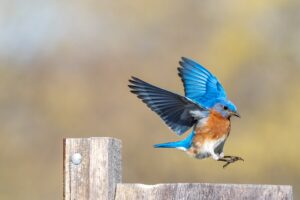
Can you birdwatch without binoculars?
Absolutely! While binoculars are a popular and helpful tool for birdwatchers, they are not essential. You can still enjoy and learn about birds without them, and in fact, some birders even choose to go “binocularless” for specific reasons. Here’s why you don’t need binoculars for birdwatching:
Benefits of watching without binoculars:
- Enhanced awareness: Without relying on magnification, you’re forced to pay closer attention to your surroundings, using your senses of sight, hearing, and even smell to identify birds. This can lead to a more immersive and mindful experience.
- Focusing on behavior: Observing birds interact with each other, forage for food, or build nests can be fascinating, and binoculars can sometimes restrict your field of view. Going without them allows you to see the bigger picture and appreciate their natural behaviors.
- Accessibility: Binoculars can be expensive and cumbersome, especially for beginners. Birdwatching without them is accessible to everyone, regardless of budget or physical limitations.
- Appreciation for common birds: Often, the most readily observable birds are overlooked due to their familiarity. Watching without binoculars encourages you to focus on and appreciate the beauty and diversity of common species in your own backyard or local park.
Related Articles:
Review: 5 best binoculars for bird watching beginners
Best birding binoculars under $200
More updated information appears in the series: Bird Watching Basics: How to watch birds






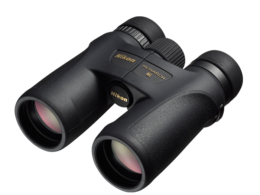
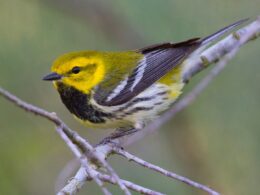
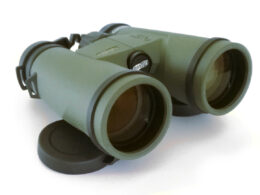
It all depends on your needs as a bird watcher and what type of birding you mostly will be doing. Let us review some magnification basics. bird watching binoculars